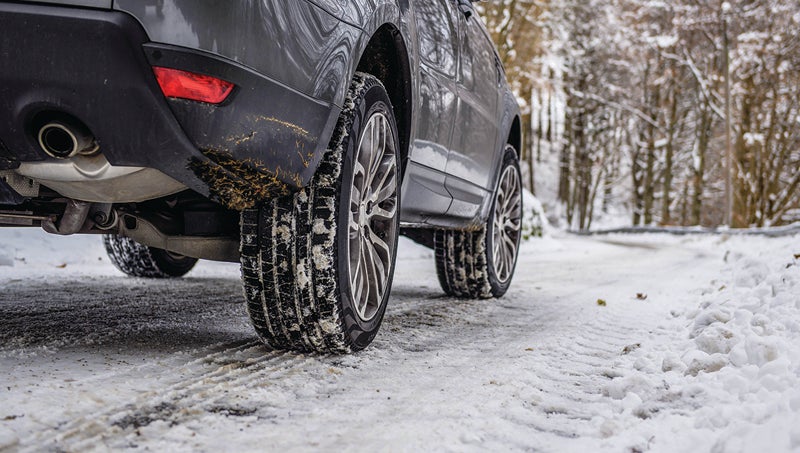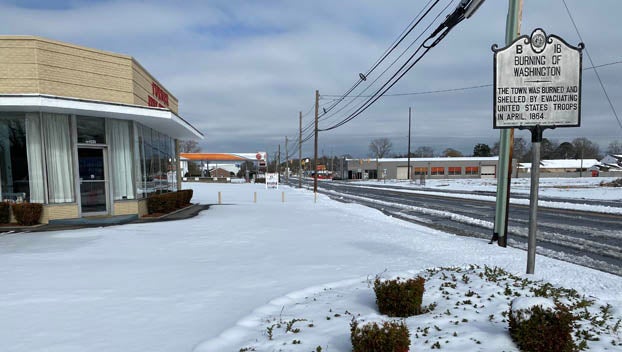Red Cross shares winter weather safety tips
Published 12:18 pm Thursday, February 20, 2020
As people across Eastern North Carolina brace for a possible winter storm with accumulating snow the American Red Cross urges residents to stay safe and warm by following basic safety and travel tips.
“The best way to stay safe in winter weather is to prepare your home, family and pets before temperatures drop, and snow and ice start to fall,” said Barry Porter, regional CEO of the Red Cross of Eastern NC. “The Red Cross encourages families to be mindful when heating their homes with space heaters, dress in layers before going outside, and bring pets indoors.”
SAFELY HEAT YOUR HOME
Heat sources such as space heaters, fireplaces or wood and coal stoves can pose a fire hazard, and fatal fires peak in the early morning hours when most people are sleeping. In January alone, the Red Cross of Eastern North Carolina Region (53 counties) responded to 183 families who lost their homes to fire. That’s nearly 6 families every night in January.
To reduce the risk of heating related fires, the Red Cross recommends:
- All heaters need space. Keep children, pets and things that can burn (paper, matches, bedding, furniture, clothing, carpets, and rugs) at least three feet away from heating equipment.
- Never leave a fire in the fireplace unattended and use a glass or metal fire screen to keep fire and embers in the fireplace.
- Never use a cooking range or oven to heat your home.
- Turn off portable space heaters every time you leave the room or go to sleep.
- Have wood and coal stoves, fireplaces, and chimneys inspected annually by a professional, and cleaned if necessary.
- If you must use a space heater, place it on a level, hard and nonflammable surface (such as ceramic tile floor), not on rugs or carpets, or near bedding or drapes. Plug power cords directly into outlets and never into an extension cord.
WINTER DRIVING SAFETY
Stay off the road if possible, during severe weather. If you must drive in winter weather, follow these tips:
- Keep the following in your vehicle:
- A windshield scraper and small broom. A small sack of sand for generating traction under wheels and a set of tire chains or traction mats. Matches in a waterproof container. A brightly colored (preferably red) cloth to tie to the antenna
- An emergency supply kit, including warm clothing.
- Keep your vehicle’s gas tank full so you can leave right away in an emergency and to keep the fuel line from freezing.
- Make sure everyone has their seat belts on and give your full attention to the road.
- Don’t follow other vehicles too closely. Sudden stops are difficult on snowy roadways.
- Don’t use cruise control when driving in winter weather.
- Don’t pass snow plows.
- Ramps, bridges and overpasses freeze before roadways.
- If you become stranded:
- Stay in the vehicle and wait for help. Do not leave the vehicle to search for assistance unless help is visible within 100 yards (91 meters). You can quickly become disoriented and confused in blowing snow.
- Display a trouble sign to indicate you need help. Hang a brightly colored cloth (preferably red) on the radio antenna and raise the hood after snow stops falling.
- Run the engine occasionally to keep warm. Turn on the engine for about 10 minutes each hour (or five minutes every half hour). Running the engine for only short periods reduces the risk of carbon monoxide poisoning and conserves fuel. Use the heater while the engine is running. Keep the exhaust pipe clear of snow, and slightly open a downwind window for ventilation.
- Leave the overhead light on when the engine is running so that you can be seen.
Visit www.redcross.org/prepare for more information on preparing for winter weather.






